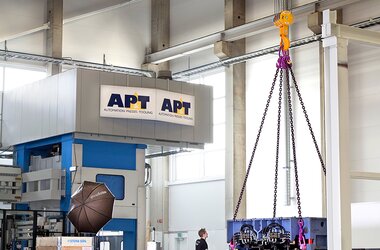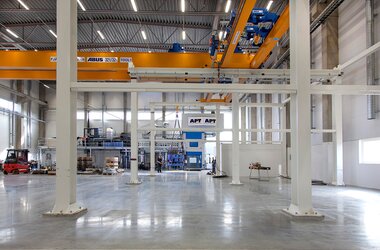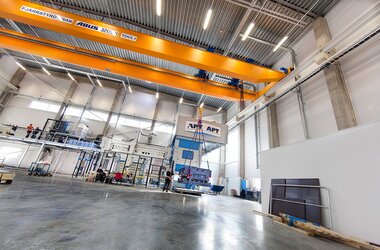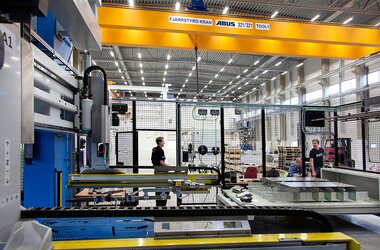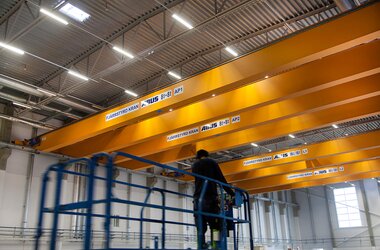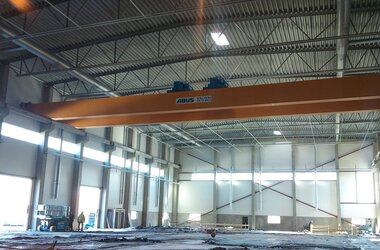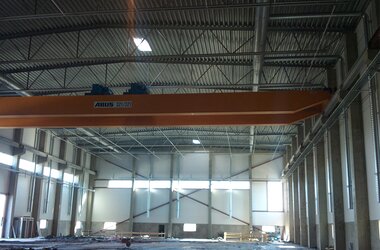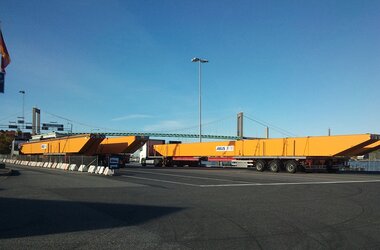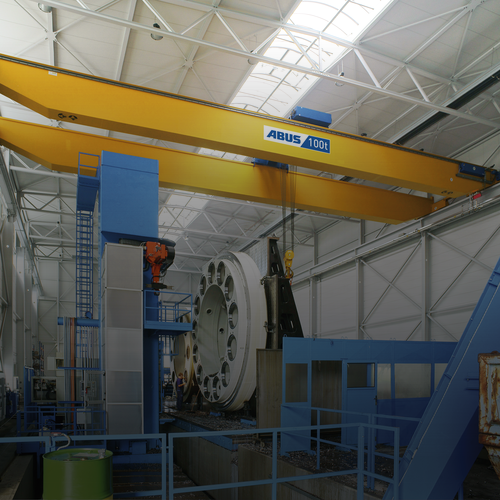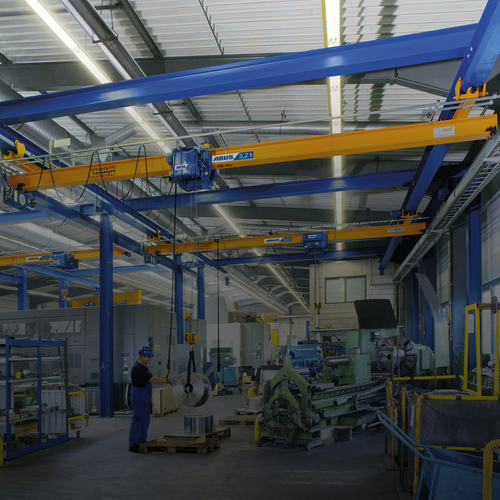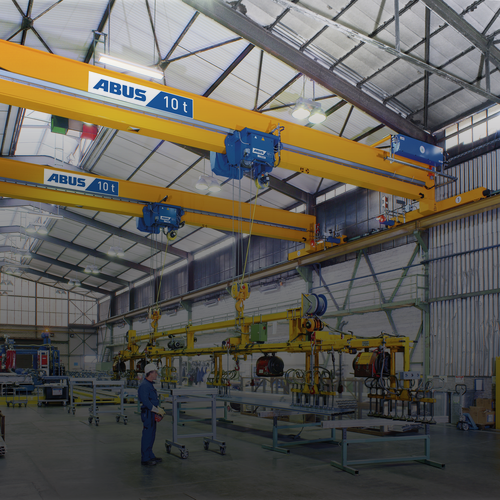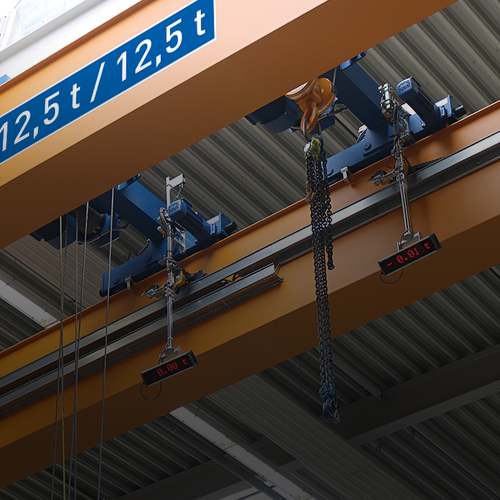ABUS EOT cranes in new production plant of AP&T in Sweden
Mould—press—harden: From raw product to metal component
The Swedish company AP&T (www.aptgroup.com) is a specialist in the sheet-metal forming industry. AP&T develop, produce, and market automation systems, presses, and complete production systems. The principal customers for these products are to be found in the automotive industry but also come in the guise of producers in the industries for white goods and domestic appliances, for air-conditioning systems, and any other industries where formed metal parts are required in the production processes. The company AP&T has three production facilities, two in Sweden and one in Italy, and a staff of over 400 employed in production, sales, and distribution worldwide. The major part of the machinery produced will be dispatched to places outside of Sweden: through agents as well as sales and service companies in over twenty countries an export rate of about 80% is achieved.
Production plant newly built at Ulricehamn
When building a new production facility at Ulricehamn in Västra Götaland, in the south of Sweden, the company AP&T decided on ABUS EOT cranes for their material handling requirements sourced from JJ-Gruppen (www.jjgruppen.se), the Swedish sub agency of ABUS Kransystem (www.abus-kransystem.se). The new production facility with a production surface of 10.000 m2 is twice the height of the old production plant at Blidsberg and thus the largest ever investment in the history of the company to date. Dan Forsell, sales engineer of JJ-Gruppen at Kungsbacka, explains: “AP&T got in touch with us very early on in their planning process because the selection of the lifting systems was going to influence the whole design of the building.” This new site has now become the headquarters of the company and includes the departments of AP&T Advanced Automation, AP&T Tooling Solution, and a testing facility for tools. JJ-Gruppen have supplied 14 EOT cranes with load capacities between 1 and 32 tonnes and have installed them in the new production facility.
Automotive industry sets the pace
As the automotive industry is continually looking for every lighter, sturdier, and more energy efficient metal components the so-called press hardening has grown into an increasingly important technology. Press hardening involves heating the blank, forming it in a hydraulic press, and cooling it down immediately. This process requires only about five seconds per part. Newer and stricter rules in the areas of safety and environment have for consequence that press-hardened components will have to meet ever higher demands in the future. Roger Johansson, production manager for AP&T, explains: “We expect the production to increase by 50% during the next three years and press hardening will have the lion’s share in this increase.”
Fit for the future with ABUS
The current product portfolio of AP&T includes a wide range of products thus enabling AP&T to serve a number of different industries such as, for example, vehicle production, household products, ventilation equipment, fire extinguishers, filters, beer kegs, heat exchanger plates and others. A tool for press hardening can weigh between ten and twenty tonnes and can have dimensions up to 2.5 by 2 metres which places highest demands on the lifting technology. AP&T uses a double girder crane ZLK with a span of 32.6 meters for the highest loads in the production of these tools. This ZLK crane has identical double-rail trolleys with load capacities of 32 tonnes each which can lift the load and also turn it. A further eight double girder cranes with spans between 7.5 and 32.6 metres and load capacities between 8 and 16 tonnes as well as one single girder crane ELK (with a span of 17.1 metres and a load capacity of 12.5 tonnes) are used in the different stages of the production process. One thing that all these cranes have in common is the operation via radio remote control. Single girders cranes of the ELV und DLVM types move smaller loads between 1 and 3.2 tonnes in the measuring and testing facilities. The main girders of both these crane types are made of sturdy rolled section girders whereas the double girder cranes and the ELK single girder crane feature welded box girders. The underslung EOT cranes DLVM are characterised by an optimum usage of the existing building dimensions thanks to the crane tracks which are mounted directly onto the ceiling of the building: the maximum width of the building is used thanks to favourable trolley approach dimensions, and the maximum height of the building is used thanks to optimised highest hook positions. Roger Johansson summarised the current situation of the company: “We have negotiated with three possible suppliers and have decided in favour of ABUS. This might also be due to the fact that we have already had good experiences with ABUS products as well as with the service organisation of JJ-Gruppen. So we are well positioned to cope with increasing worldwide demand for press hardened parts but also for systems for niche products.”

